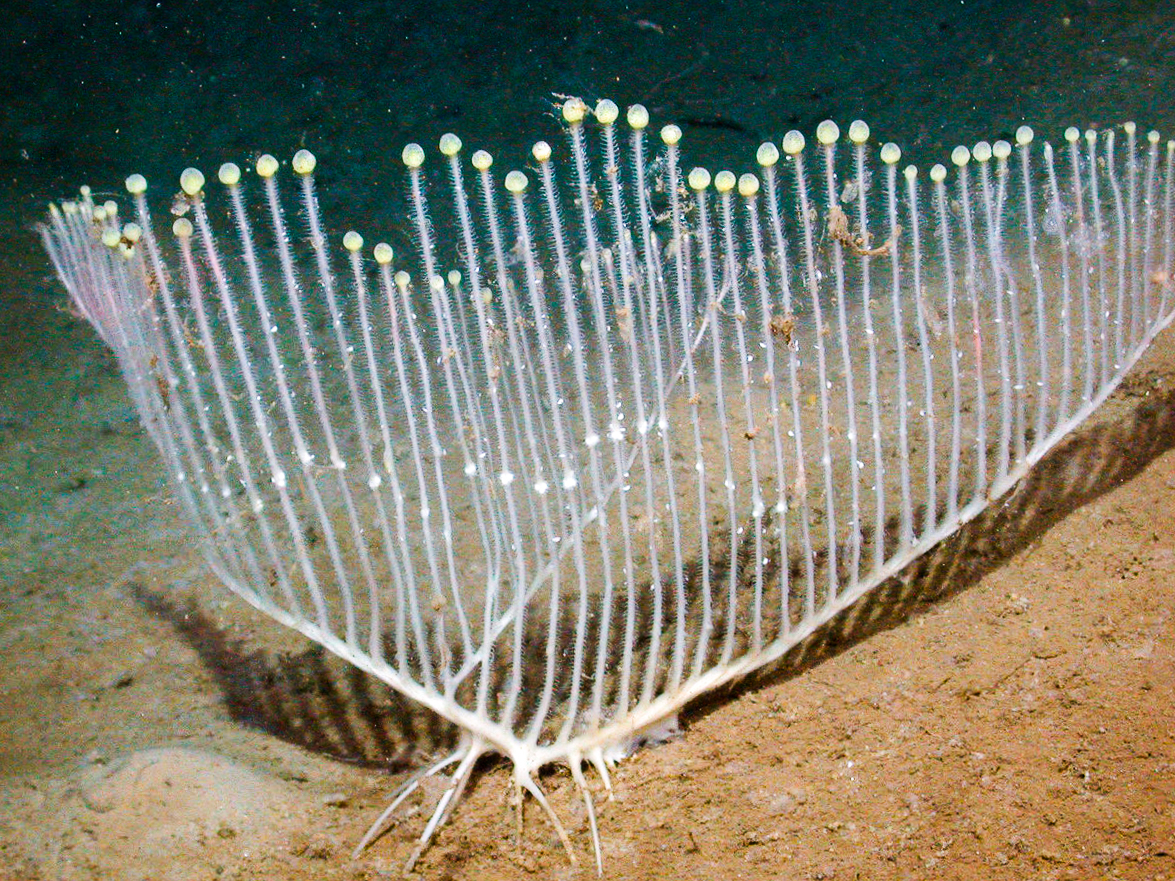Welcome to Cnidology Tonight’s experimental new segment. Every once and a while we like to explore a new phylum or class and some of its most prominent members. This morning’s phylum is Porifera, the wonderful world of sea sponges.

This is Chondrocladia lyra, a brilliant species of carnivorous sponge discovered by a MBARI expedition in 2012. It is also affectionately called the ‘harp sponge’.
Unlike most sponges, Chondrocladia is carnivorous. It is able to trap prey with tiny hooks on the ‘harp strings’ or arms. Most sponges eat by filtering almost anything out of the surrounding ocean water. Sponge food includes microorganisms, plankton, dead biomass, and fecal matter. Sponges are not picky.
The harp sponge, however, waits for small crustaceans or fish to float by into its trap. When a prey item floats into one of the arms of the sponge it sticks to the arm and is enveloped by surrounding tissue. The prey is then digested, as in liquified, and then absorbed by the sponge.
Scientist believe that the sponge evolved to the shape it is to maximize surface area. The sponge stretches itself out as wide as possible to catch enough food. Specimens have been observed with 2 to 6 arms.

In this image you can see biomatter being digested by the sponge.
This sponge is found 3 kilometers (2 miles) below the surface of the ocean. The expedition was conducted in the northeastern Pacific Ocean, off the coast of California. The sponge is rooted in a muddy sediment along the sea floor. The vain looking structures are nutrient carrying canals that spread obtained nutrients across the organism.
Each sponge is a hermaphrodite. The bulbous structure on the top of each arm is a sperm packet and the small uniform structures in the middle of the arms are egg development sites. Chondrocladia, like many other invertebrates uses broadcast spawning.
The sponge will release sperm then another sponge’ egg development site will be fertilized. This is all we know about the life cycle of this sponge. Based on the Chondrocladia‘s root structure, we can theorize that there is some kind of free swimming larval stage. The larva attaches to the soft mud, then takes root. After becoming rooted the sponge develops arms.
The sponge was found along with several types of anemone and Deepsea fish, there could even be a symbiotic relationship. Very little is known about this Deepsea sponge, and there are only 33 confirmed species of carnivorous sponges.
We hope that in the future more will be learned about the Deepsea in general, and especially how so many invertebrates fit into the ecosystem. In any case, thank you for trying out this new segment type, we hope it was informative.
What are on the distal ends of the harp? They look like little light bulbs. Are they illuminated? I really enjoyed the post. Well done.
LikeLike
That doesn’t even look real!
On Tue, Mar 16, 2021 at 7:59 PM Cnidology Tonight wrote:
> cnidologytonight posted: ” Welcome to Cnidology Tonight’s experimental new > segment. Every once and a while we like to explore a new phylum or class > and some of its most prominent members. This morning’s phylum is Porifera, > the wonderful world of sea sponges. image credit: The ” >
LikeLike
I love this new segment! The Harp Sponge looks amazing; almost doesn’t look real – very interesting.
LikeLike